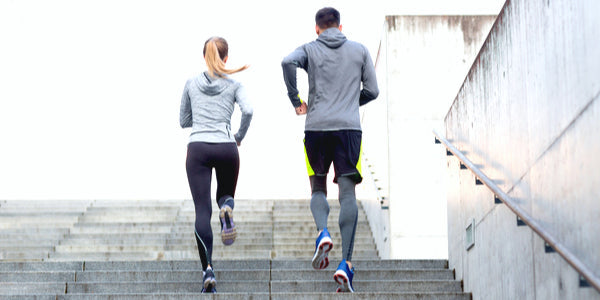
When it comes to desiring weight loss, exercise is sought out or increased to accelerate progress and results.
But even beyond shedding off those unwanted pounds, regular physical activity is encouraged to support both physical, mental, and emotional health.
And while any exercise is encouraged over going without, there are proper ways to exercise to prevent injury and optimize its overall benefit.
So what are you waiting for? Learn how to exercise properly with these expert tips!
10 Expert Exercise Tips
There are general recommendations regarding the workout type and frequency for an effective exercise routine. Knowing what to wear, eat, and drink is helpful as well.
1. Obtain Advice from Your Doctor
Many health conditions can improve and benefit from exercise. However, it is still a good idea to consult with a doctor before starting any sort of exercise program.
Their guidance and expertise can help tailor recommendations to fit personal needs. They can also address the best ways to exercise, especially if living with asthma, heart disease, or other chronic conditions.
2. Feel and Look the Part
Feeling discomfort from workout attire is the last thing many want to worry about during exercise. Feeling and looking the part also exudes confidence!
So wear clothes that do not restrict movements or blood flow, along with wearing breathable material while you sweat. And when picking out shoes, select a pair that accommodates the type of activity being accomplished.
Also be sure to dress appropriately for the weather, including layers in the extreme cold to prevent the risk of hypothermia.
3. Follow Workout Hydration Rules
Hydration is important for good health, especially during exercise.
Sweat is common during a workout, and hydrating the body can lower the risk of muscle cramps caused by dehydration. Adequate hydration is also important to keep metabolic processes running efficiently.
As a general rule of thumb, consume at least 64-ounces of water daily. Additional considerations suggest regular exercisers and athletes should drink the following:
• 16 ounces of water leading up to the activity
• Six to 12 ounces immediately prior to exercise
• During every 15 to 20 minutes of active training
4. Use Proper Warm-Up Exercises
Before jumping into a workout, it is important to participate in some sort of warm-up for about five minutes. Or, until the muscles feel warmer and heart rate states to elevate.
Warm-up with brisk walking, light jogging, jumping jacks, or another exercise to elevate heart rate. Stretching before exercising is discouraged, as it may increase the risk of pulling or straining a muscle.
Following a warm-up, stretch the loosened muscles to make them more flexible. Do dynamic stretches, or slow and controlled movements, rather than remaining still and holding them. Dynamic stretches may include arm circles, leg raises, hip rotations, and flowing yoga poses.
5. Cool Down Appropriately
An effective cool-down regimen can reduce pain and stiffness following a workout.
While the muscles are still warm, do "static" stretches, breathing deeply and holding for up to 30 seconds at a time. These sort of post-workout stretches help lengthen muscles and improve their flexibility.
Also, take the time to cool down from a workout. A light, 10-minute walk or jog allows the heart rate to decline back to normal. It encourages blood flow and removes lactic acid from the body as well.
6. Keep Moving and Heart Rate Elevated
Aerobic exercise supports heart and overall health and includes any exercise that elevates heart rate, including jogging and biking.
Target heart rate during moderate-intensity activities is about 50 to 70 percent of maximum heart rate. During vigorous physical activity, target heart rate is about 70 to 85 percent of maximum.
The maximum heart rate is about 220 minus your age. To illustrate, a 30-year-old's maximum heart rate would be 190. When completing a moderate-intensity exercise, heart rate should be in the range of 95 to 133.
Also, rationalize workout exertion based on the ease (or lack) of conversation. Struggling to hold a conversation? You may be exercising too hard. But if you can chat someone's ear off, you may not be exercising hard enough.
7. Strength Train Properly
Strength training is simply the act of building muscle and strength. It is recommended to be completed at least two times a week.
To lower the risk of injury and maximize its benefits, one should learn how to strength train properly. This includes the following tips:
• Focus on good form rather than trying to quickly crank out repetitions. Rushing and jerking movements, especially when lifting weights, may cause serious injury.
• Lift an appropriate weight amount. The selected weight should make muscles feel tired or fatigued, for a general max of 15 reps. If new to resistance training, body weight exercises and stationary machines are encouraged.
• Embrace muscle balance and target all muscle groups of the upper and lower body.
• Consider a workout buddy. Not only can they be a spotter for weight training sessions, but help you stay motivated!
8. Consider High-Intensity Interval Training (HIIT)
Exercise is not strictly confined to cardio or resistance training sessions. HIIT is a training idea in which low to moderate intensity intervals or alternated with high-intensity intervals. HIIT consists of intense bursts of movement accompanied by seconds of rest on repeat for many cycles.
Mostly related to using both aerobic and anaerobic energy systems, HIIT can help those lose weight without lengthy workouts at the gym. These exercises are suggested to increase muscular size and strength, along with creating the "afterburn effect." Officially known as excess post-exercise oxygen consumption (EPOC), the afterburn helps burn calories after the vigorous activity is completed.
9. Rest and Slowly Progress without Injury
No, resting does not mean resting on your health goals and remember Rome truly was not built in a day...
Biting off more than you can chew may actually hinder progress, as injury is more likely to occur if trying to lift too heavy or sprint too quickly. So gradually progress and be patient with your results.
The ability to add more weight and run quicker will naturally follow when remaining consistent with exercises. Also give muscle groups at least a day or two of recovery to prevent injury, while also listening to the body. If feeling incredibly sore, take the day off!
But if itching for some sort of exercise, incorporate active recovery in a regimen. This may include practicing yoga or taking a hike out in nature.
10. Have Fun!
Ultimately, have fun! Because if exercise feels like a chore, there is a low likelihood to carry out a long-term workout regimen.
Besides, there are hundreds of ways to get active, including at a group cycling class or walking with the family dog. So experiment and try out new exercises, and continue the ones you love.
The most importance is not necessarily on how you choose to get active, just that you are!





